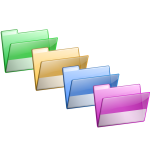 A computer, contrary to popular opinion, does not actually have a mind of its own.
A computer, contrary to popular opinion, does not actually have a mind of its own.
It is an entity devoted entirely to following the instructions that it is given, whether they be perfect or flawed. (Hint: It’s usually the flawed instructions — or faulty hardware — that lead us to believe that computers are sentient and out to get us.)
As you may imagine, it takes quite a few instructions, all put together, for a computer to function. The more functions it can perform, the more instructions are necessary. By the time you have an operating system installed with a few programs running on it — well, that’s quite a few instructions right there already.
Have you ever wondered how your computer knows where to find all of the instructions that it needs to be able to function? Maybe stop and think about that the next time it takes an extra millisecond for a program to load. It could be much worse!
All of that instructional data is stored somewhere, otherwise it would be lost from memory the first time the computer is turned off.
How is all of that data saved, so that it can be quickly found again when it’s needed?
Read More
 You might not think about using keyboard shortcuts in the command line, but why not?
You might not think about using keyboard shortcuts in the command line, but why not?
 In the Linux command line, working with files is made easy by the multitude of file-manipulation commands that are available.
In the Linux command line, working with files is made easy by the multitude of file-manipulation commands that are available. How do you know where to find files on your computer?
How do you know where to find files on your computer? A computer, contrary to popular opinion, does not actually have a mind of its own.
A computer, contrary to popular opinion, does not actually have a mind of its own. Oftentimes, while in the middle of a conversation, there will be a word that I want to use because it fits the context perfectly, and yet I am unable to remember the word.
Oftentimes, while in the middle of a conversation, there will be a word that I want to use because it fits the context perfectly, and yet I am unable to remember the word. Windows and Linux, as two of the most popular operating systems on the market today, are often pitted against one another.
Windows and Linux, as two of the most popular operating systems on the market today, are often pitted against one another.